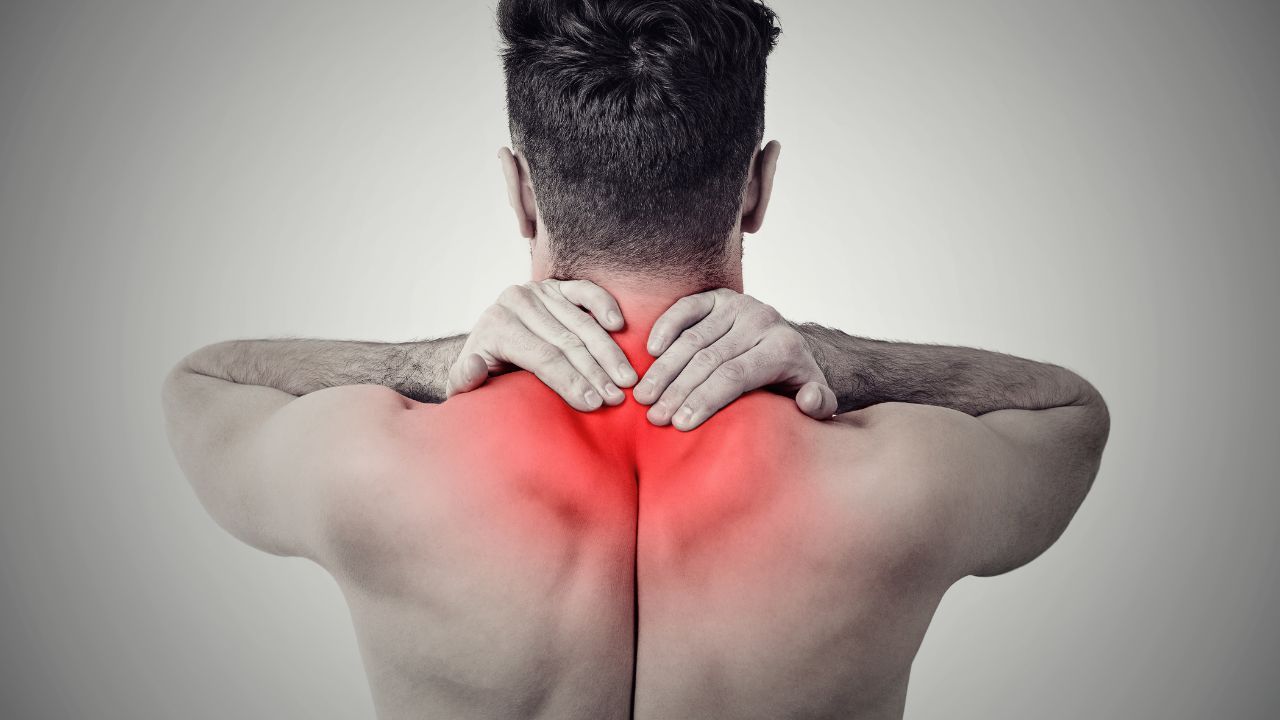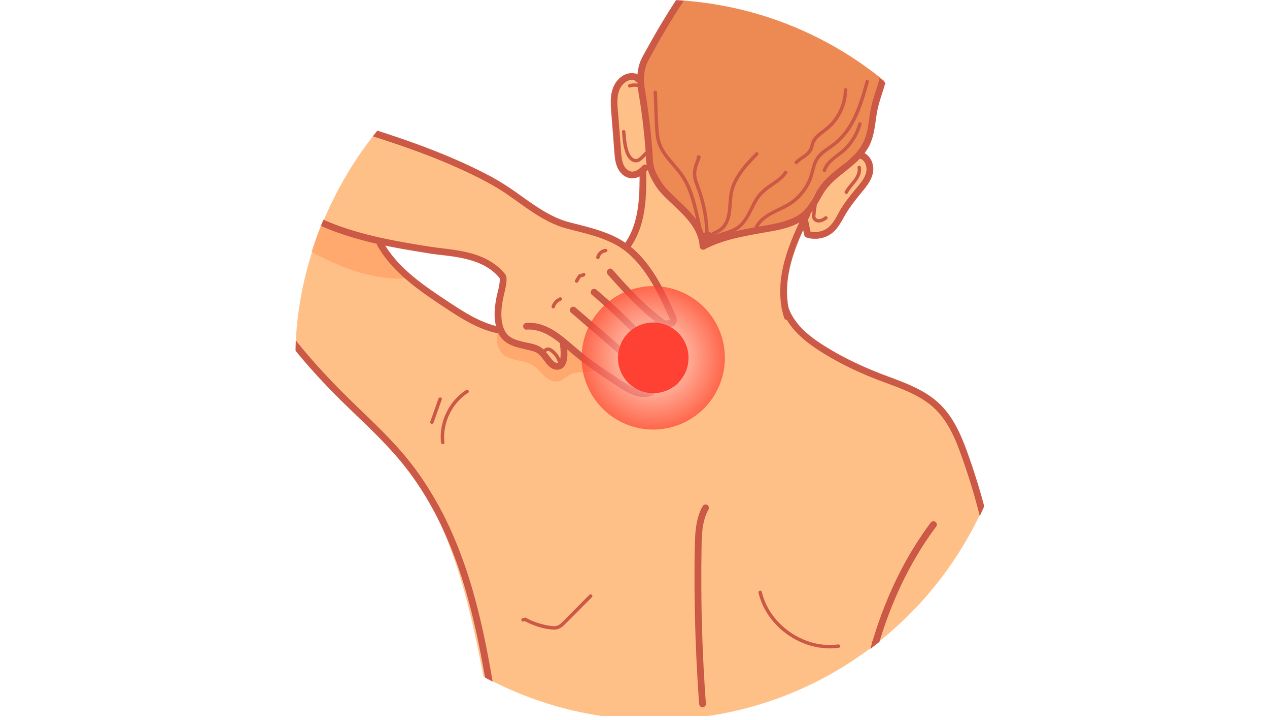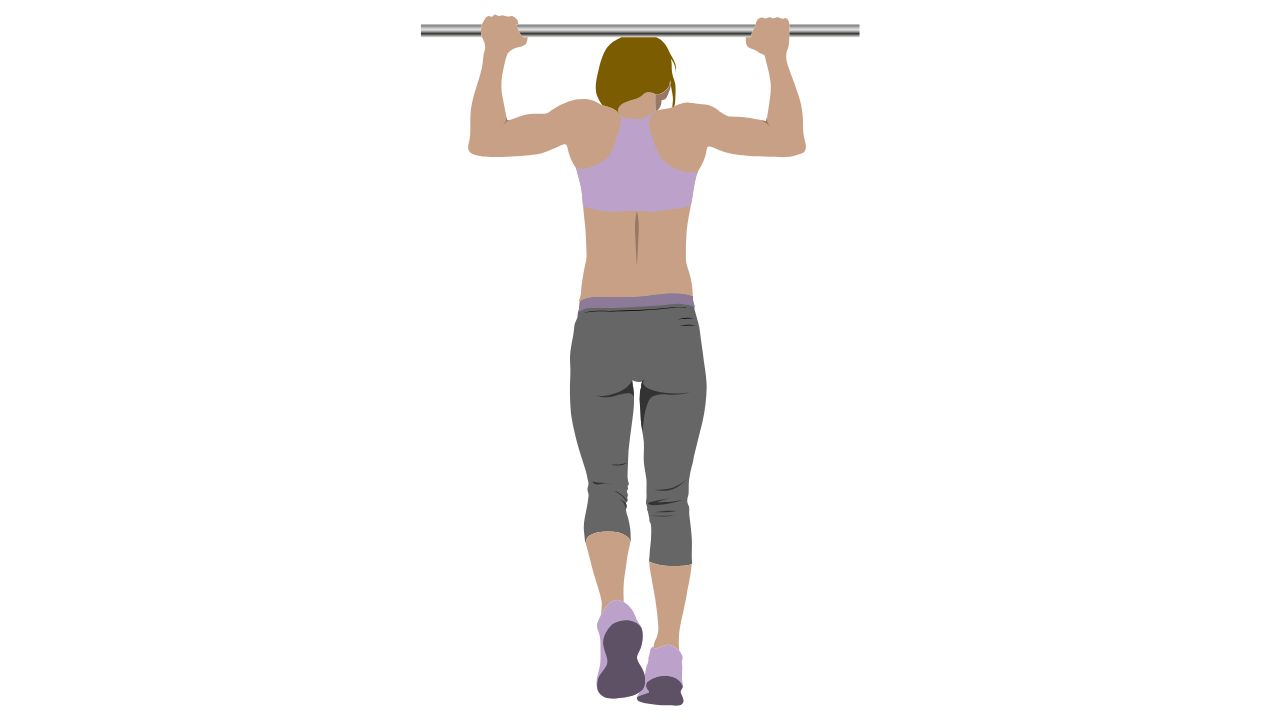3-Step Solution to Trapezius Pain
Mar 14, 2025
Does it seem like you can’t get through a workday without your trapezius flaring up? Does your neck and upper traps scream at you after an upper body workout?
I used to get this same pain pattern. I vividly recall getting flare ups that would last weeks when I tried to build up my pull-up numbers.
But years later, this part of my body rarely flares up, if ever. This is because I laid the foundation for balance and strength in my neck and upper back muscles.
In this article, I’ll explain exactly how you can do the same in 3 easy steps.
Step 1 – Breathe out of Trapezius Muscle Pain
The main breathing muscles are the diaphragm, intercostals and abdominal muscles. These muscles are located in the chest, ribcage and abdomen, not the neck and upper traps.
This doesn’t mean that the upper traps and neck have no role in breathing. They do. Especially in the fast and short type of breathing that is required during high-intensity exercise.

But this is not the type of breathing our bodies are designed to do too often. Most of the time, our breathing should be relatively calm and relaxed. This type of breathing comes from the abdomen and ribcage.
The problem for many of us living a modern and stressful lifestyle is that we rely too much on the fast and short type of breathing rather than the calm and relaxed type. This is one reason why the upper traps and neck can become chronically tight and painful.
Learning how to consciously shift your breath to your abdominal area is critical in overcoming this pain pattern. The next two steps are useless if you can’t master this foundational element.
Try this see-saw breathing technique where you exaggerate the action of the chest and abdomen. It may feel awkward at first, but you should get the hang of it within a week.
The goal is not to breathe like this all the time. Instead, familiarize yourself with what it feels like to breathe with better technique. Then do your best to pay attention to how you breathe on a day-to-day basis.
If you notice yourself breathing too much with your upper traps and neck, see if you can move the breath more to your abdomen and chest like you do in your practice. This will not only improve your pain but also help you relax. Win-win!
Step 2 – Unwind Neck and Trapezius Pain
Once your breathing is locked-in, the next step is to reduce tension in your upper traps with gentle exercise. My favorite exercise for this area of the body is the prone shoulder reset.
The only part of your body that moves in this position are your shoulders. The rest of your body is in a balanced posture while you actively pull your shoulders down into a healthier position.
This exercise does two things: (1) it helps reduce tension in the neck and upper traps immediately and (2) it will teach your nervous system how to adopt this posture unconsciously in daily life.
You’re improving symptoms while also building a more resilient body for the long-term. The floor acts as a support here to prevent the front of the body from compensating. Another exercise to try, the Wall-Stand, has a similar aim but uses the wall for support instead.
By leaning into the wall with your upper body, you avoid any type of compensation happening as you practice bringing your shoulders down into a healthier posture.
This one might be more challenging if you have major restrictions in your neck. Experiment with both of the above exercises to see which one feels better for you and stick with it for a few weeks to get the best results.
Step 3 – Eliminate Upper Trapezius Pain with Better Pushing and Pulling Technique
Think of the above two steps as foundational but preparatory. They are necessary but limited in their effectiveness.
In other words, you can’t get to this final step without learning how to properly breathe and reduce tension in the upper traps. But if you want long-term pain relief, you need to build some strength.

The only way to build resilience in your body is by overcoming stress. This is essentially what strength training is. Your body gets stronger by gradually resisting higher levels of external load.
When it comes to the upper body, two staple movements are pushing and pulling. There are hundreds of exercises and variations for building strength in pulling and pushing. To keep it simple, we’ll stick with the basic push-up and row.
Just because these two exercises are basic does not mean they are ineffective. If you master just these two movements, you’ll likely be stronger than 90% of the population.

But to get the most out of these exercises, you must be extremely diligent about your technique. You don’t just want to bang out more reps, you want to create a resilient upper body that doesn’t have pain flare ups in the neck and upper traps.
This means you must prioritize quality over quantity. You need to build that muscle and mind connection in the areas that matter. Out of the two, pulling will be more of a priority for you because it strengthens all those back muscles that help build better posture.
Your number one cue here is to ensure your shoulders don’t rise or come forward. If they do, this is a sign that your upper traps are doing too much of the work. Make the exercise as easy as you need in order to avoid this compensation.
The way to make the row easier is by reducing the angle. You can do this by bending your knees or simply pulling from a higher position.
Another important cue is squeezing your shoulder blades down and back at the end of each rep. It is helpful to hold that position for a second or two so you can exaggerate this cue.
Moving on to the push-up, good technique requires you to protract your shoulders in the top position. But this doesn’t mean that your shoulders need to be elevated.
Think about pushing your shoulder blades away from each other in the top position, but without the shoulders moving toward your neck. In the bottom position, pull the shoulder blades down and back as you did in the row.
You might notice that it is very difficult to perform a normal push-up without your shoulders elevating. This should not be a surprise since your upper traps are dominant and symptomatic.
If this is the case for you, swallow your pride and perform some push ups on your knees for a few weeks or months. Once you get stronger, go back to the standard position.
Programming
You can perform the see-saw, shoulder reset and wall stand exercises every day if you'd like. To get the most out of them, I recommend performing them at least 2-3x a week.
For rows and push-ups, you need to be more mindful with frequency. You don't want to go close to failure more than once or twice a week. On the other hand, if you're just doing a few reps to practice technique, you can do them more often.


